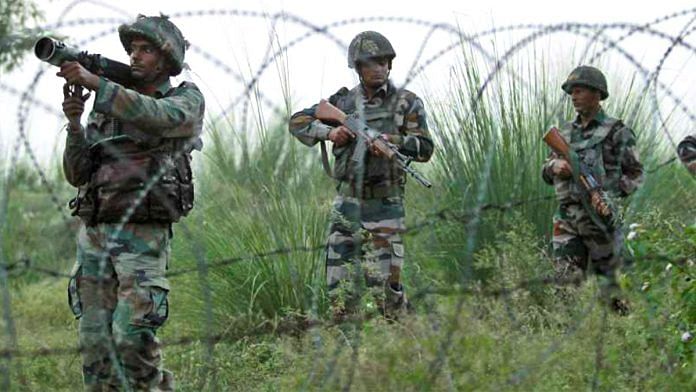On 25 February 2021, the Director-General of Military Operation (DGMO) of India and Pakistan released a joint statement saying that they had agreed to a ceasefire and that troops on both sides will be holding back their guns as of midnight of 25 February. The statement further reads that there will be a “strict observance of all agreements, understandings and cease firing,” while also claiming they will seek to “address each other’s core issues and concerns” to ensure sustainable peace and tranquillity in the region. The abrupt announcement essentially revived a 2003 ceasefire agreement along the Line of Control, or LoC, as the disputed stretch of the frontier is called.
The two countries had conducted secret talks last year through back-channel diplomacy, the details of which weren’t made public. As soon as the truce was announced, it surprised many across the globe while at the same time bringing a sense of relief to the population that resides along the world’s most heavily militarised border. The official data reveals that though there were some skirmishes reported on the border, but overall it has been fourteen months now of peace.
Life in the Forward Areas
There are some five million people that live on both sides of the LoC and it is this population that is always at the receiving end of hostilities. For civilians, the incidents of Cease-Fire Violations (CFVs) often result in fatalities, destruction of property, loss of livestock, curfews, and restrictions on movement, no or little access to schools, healthcare, disruption of agriculture and other commercial activities.
In areas of fierce CFVs, people have either left their households and migrated to the safe areas or have constructed concrete individual or community bunkers to withstand heavy artillery. Mohammad Zahid, 25, a resident of Guntriyan village of Poonch district and whose house is so close to the LoC that he can even see houses on the other side said that he had been given Rs 3 lakh by the administration which helped him construct an underground bunker. Similarly, a total of 8,500 bunkers out of the total 14,400 sanctioned are ready for use by the border dwellers along the International Border (Jammu, Kathua, & Samba) and LoC (Poonch and Rajouri).
Zahid recalls that prior to the ceasefire, people were not able to step out of their houses for days fearing being hit by the mortars in the crossfire. He adds that they were not able to work to earn their livelihood nor were able to take care of their livestock which is their main source of livelihood. The truce had a positive impact on the socio-economic condition of the people along the border in the form of an increased number of workdays, no restrictions on movement, access to institutions, and more importantly, a respite from the constant fear.
Whenever there used to be an exchange of gunfire across LoC, both sides claim they are retaliating, blaming the other side for breaking the ceasefire and boasting that a befitting armed response was given. No one has won the blame game but many have lost their lives or limbs. Mohammad Sharief, 46, who resides along LoC, said that he was hit by a mortar shell in 2019 while he was working on a field which left him physically disabled.
Also read: As infiltration season looms along LoC, Army considers troop deployment rejig in Kashmir
Fault Line problems
The agreement remains highly fragile keeping in mind the possibility of exchange of gunfire across the LoC particularly in areas of infiltration. For example, the prolonged military operation in the Bimber Gali sector of Poonch district in October last year wherein gun fires were exchanged for nearly a month between militants and the Indian army. Though a little distant from the LoC, the Indian Army lost at least 11 soldiers in the dense and inhabited forest areas. An incident like this would often lead to retaliatory actions from both sides.
More recently, the firing of the BrahMos missile into Pakistani territory, “accidentally due to technical malfunction” as the Indian official statement reads, relegates the ceasefire redundant as a ‘mistake’ of this kind could have led to a full scale, the disproportionate response from the Pakistani military. Likewise, any big attack such as Pulwama, Uri, or Balakote airstrike reinstates the fear of heavy exchanges along the border which further put the lives of the civilian population at constant risk.
Also read: This ‘imposter’ wrote & sold book on his ‘life in Army’. Now, he’s under arrest in Kolkata
Incidents of CFVs
According to data released by the Indian Ministry of Home Affairs, there were around 3,479 incidents of CFVs in 2019, 5,133 in 2020, and 670 incidents in 2021. Of these 670 CFVs, all except six took place prior to the truce. As of now, the year 2022 has fortunately recorded no incident of CFVs, and subsequently, no loss of life was reported. Besides, the CFVs are also monitored by the United Nations Military Observer Group in India and Pakistan (UNMOGIP) which operates through its field stations located one each in Poonch, Rajouri and Jammu.
The two nuclear-giant neighbours need to work on the low-hanging fruits which will ultimately pave the way for addressing the core issues. The past couple of years has also led to the complete suspension of cross-border trade and the disruption of Bus services on LoC. However, since last year, the truce has been held successfully to date, allowing civilians to live their lives with peace and dignity and to carry on their professions with no fear of getting hit at any time. However, there always remain speculations about the sensitivity of the factors mentioned above. Even the ceasefire agreement of 2003 remained in force for a few years until crises like 2008, 2010, 2012, and 2016 erupted, relegating the agreement to the pages of history.
The author is a student at Jamia Millia Islamia University, New Delhi. Views are personal




